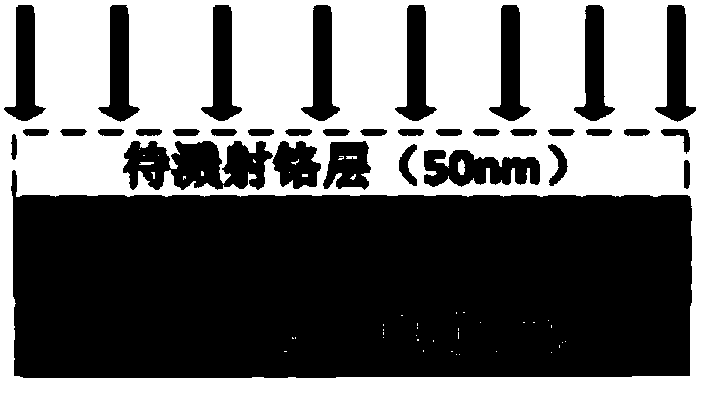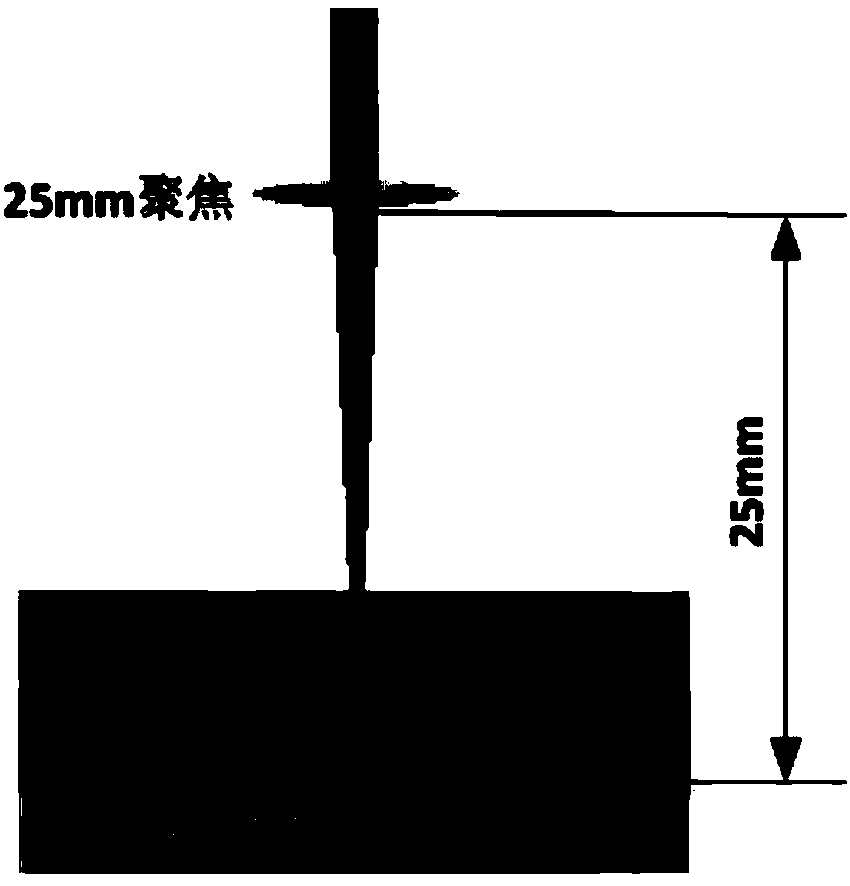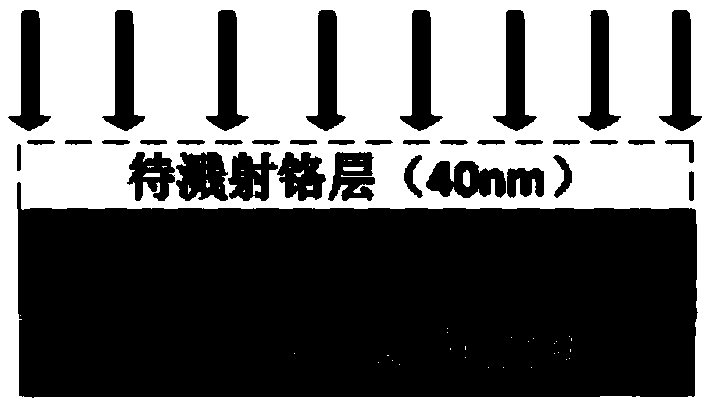A method for etching extremely-thin electrical isolation grooves on the surface of an ITO conductive thin film
A conductive thin film, surface etching technology, applied in circuits, photovoltaic power generation, electrical components, etc., can solve the problems of difficult to reach 50μm micro groove width, poor processing quality and efficiency, low groove speed, etc., to improve the utilization of materials. efficiency, improved battery performance, high processing efficiency
- Summary
- Abstract
- Description
- Claims
- Application Information
AI Technical Summary
Problems solved by technology
Method used
Image
Examples
Embodiment 1
[0020] A method for etching extremely fine electrical isolation grooves on the surface of an ITO conductive film includes the following steps:
[0021] 1) First, sputter 50nm thick metallic chromium on the reverse side of the ITO conductive film glass substrate, such as figure 1 Shown
[0022] 2) Secondly, fix the ITO conductive film glass substrate on the stage, with the metal chromium side on the side of the laser emitting area, and keep the area of the ITO conductive film side that needs to be grooved not to touch the stage;
[0023] 3) Finally, using a picosecond laser with a wavelength of 532nm, a repetition frequency of 1KHz, a pulse width of 10ps, and a power of 12mw, a focusing lens with a focal length of 25mm is used to back-etch the ITO conductive film at a speed of 0.3mm / s, and the skin The center line of the second laser beam must be perpendicular to the surface of the ITO conductive film, and the focus position must be maintained on the ITO conductive film layer during...
Embodiment 2
[0025] A method for etching extremely fine electrical isolation grooves on the surface of an ITO conductive film includes the following steps:
[0026] 1) First, sputter 50nm thick metallic chromium on the reverse side of the ITO conductive film glass substrate, such as figure 1 Shown
[0027] 2) Secondly, fix the ITO conductive film glass substrate on the stage, with the metal chromium side on the side of the laser emitting area, and keep the area of the ITO conductive film side that needs to be grooved away from the stage;
[0028] 3) Finally, use a picosecond laser with a wavelength of 532nm, a repetition frequency of 1KHz, a pulse width of 10ps, and a power of 10mw, and use a lens with a focal length of 25mm to focus, and back-etch the ITO conductive film at a speed of 0.4mm / s, and The center line of the picosecond laser beam must be perpendicular to the surface of the ITO conductive film, and the focal position must be kept on the ITO conductive film layer during the entire pr...
Embodiment 3
[0030] A method for etching extremely fine electrical isolation grooves on the surface of an ITO conductive film includes the following steps:
[0031] 1) First, sputter 40nm thick metallic chromium on the reverse side of the ITO conductive film glass substrate, such as image 3 Shown
[0032] 2) Secondly, fix the ITO conductive film glass substrate on the stage, with the metal chromium side on the side of the laser emitting area, and keep the area of the ITO conductive film side that needs to be grooved away from the stage;
[0033] 3) Finally, using a picosecond laser with a wavelength of 532nm, a repetition frequency of 1KHz, a pulse width of 10ps, and a power of 12mw, a focus lens with a focal length of 25mm, and a scanning speed of 0.3mm / s for backward etching of the ITO conductive film, and The center line of the picosecond laser beam must be perpendicular to the surface of the ITO conductive film, and the focal position must be kept on the ITO conductive film layer during th...
PUM
 Login to View More
Login to View More Abstract
Description
Claims
Application Information
 Login to View More
Login to View More - R&D
- Intellectual Property
- Life Sciences
- Materials
- Tech Scout
- Unparalleled Data Quality
- Higher Quality Content
- 60% Fewer Hallucinations
Browse by: Latest US Patents, China's latest patents, Technical Efficacy Thesaurus, Application Domain, Technology Topic, Popular Technical Reports.
© 2025 PatSnap. All rights reserved.Legal|Privacy policy|Modern Slavery Act Transparency Statement|Sitemap|About US| Contact US: help@patsnap.com



